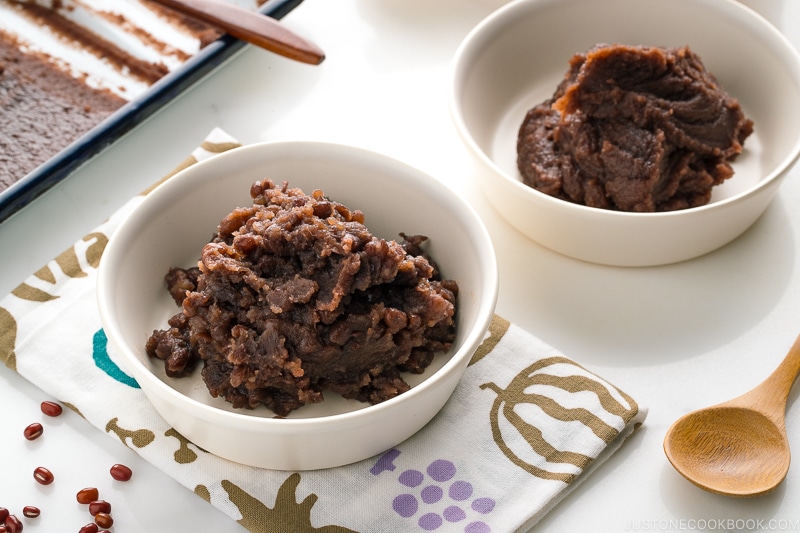You probably already know that A4 is the most common paper size, but what about the others? What do the different sizes mean, and how do you choose the right one for your needs?
Paper sizing systems can vary globally, with the most commonly used system being the ISO standard, especially in countries outside of North America. The ISO 216 standard defines the A and B series of paper sizes, each serving different practical purposes.
- The A series is designed for general use and is most commonly used for everyday documents such as letters, forms, and notebooks. A4, in particular, is the international standard for office and school printing.
- The B series offers a wider range of sizes and is typically used in commercial printing, publishing, and posters. It provides dimensions that fall between the sizes in the A series, making it useful when slightly larger or smaller formats are needed.
In this guide, we'll break down the different paper sizes, explain how they are measured, and suggest the best uses for each type. We’ll also provide a standard paper size chart in millimeters (mm), centimeters (cm), and inches for easy reference.
A Series Paper Sizes (A0–A10)
The A series is the most common paper size range and follows a consistent aspect ratio of 1: √2. This means that each size is half the size of the one before it when folded parallel to its shorter side.
- A0 – Perfect for technical drawings, architectural blueprints, and large posters. Its large surface allows for detailed layouts, ideal for professionals and exhibitions.
- A1 – Commonly used for academic posters, visual displays, and planning charts. It’s large yet manageable, great for classrooms and business presentations.
- A2 – Favored by artists for displaying work. Also used for wall calendars, portfolios, and sketches that need more space without overwhelming the viewer.
-
A3 – Ideal for drafting, diagrams, and printing two-page spreads. Common in design studios and offices, it fits most larger printers and scanners.
-
A4 – The global standard for documents, schoolwork, and business files. Compatible with most printers and filing systems, it’s extremely practical.
Example: Life Noble Notebook A4 College Ruled 8mm N37 -
A5 – Widely used for personal notebooks, planners, and travel journals. Compact and portable, it strikes the perfect balance between writing space and convenience.
Example: Monokaki N2 A5 Notebook 9mm Lined Fountain Pen Friendly
-
A6 – Great for jotting down quick notes, daily tasks, or reminders. Its compact size fits easily in pockets or small bags.
Example: Nippon Note Premium CD Unruled Notebook A6 -
A7 – Ideal for flashcards, wallet-sized notes, or quick reminders. Commonly used in study aids and travel-sized notepads.
- A8 – Used for small tags, labels, and creative crafts. Its tiny format is great for decorative or functional labeling.
- A9 – Works well for price tags, tiny labels, and minimal designs. Often used in shops or craft projects with tight space constraints.
- A10 – The smallest size, ideal for micro-labels, miniature tags, and fine print needs. Perfect for specialty packaging or tiny notes.
You can explore more A-series Japanese notebooks here.
A Size Paper in mm, cm, and in
|
Size |
Best For |
mm |
cm |
inches |
|
A0 |
Posters and Engineering Plans |
841 x 1189 mm |
84.1 x 118.9 cm |
33.11 x 46.81 in |
|
A1 |
Conference and Classroom Charts |
594 x 841 mm |
59.4 x 84.1 cm |
23.39 x 33.11 in |
|
A2 |
Art Prints and Calendars |
420 x 594 mm |
42.0 x 59.4 cm |
16.54 x 23.39 in |
|
A3 |
Design Layouts and Spreadsheets |
297 x 420 mm |
29.7 x 42.0 cm |
11.69 x 16.54 in |
|
A4 |
Everyday Documents and Printing |
210 x 297 mm |
21.0 x 29.7 cm |
8.27 x 11.69 in |
|
A5 |
Notebooks and Planners |
148 x 210 mm |
14.8 x 21.0 cm |
5.83 x 8.27 in |
|
A6 |
Pocket Memos and Checklists |
105 x 148 mm |
10.5 x 14.8 cm |
4.13 x 5.83 in |
|
A7 |
Flashcards and Mini Notes |
74 x 105 mm |
7.4 x 10.5 cm |
2.91 x 4.13 in |
|
A8 |
Gift Tags and Labels |
52 x 74 mm |
5.2 x 7.4 cm |
2.05 x 2.91 in |
|
A9 |
Price Tags and Tiny Stickers |
37 x 52 mm |
3.7 x 5.2 cm |
1.46 x 2.05 in |
|
A10 |
Micro Labels and Packaging IDs |
26 x 37 mm |
2.6 x 3.7 cm |
1.02 x 1.46 in |
B Series Paper Sizes
The B series offers sizes that are slightly larger than the A series. These are used for posters, books, and envelopes. The B sizes are also based on the square root of two, but they offer a wider range and in-between sizes.
Note that Japan uses a variation called the JIS B series, which differs slightly from the international ISO B series. JIS B sizes are based on different dimensions and tend to be slightly larger than their ISO counterparts.
- B0 – Ideal for huge posters, trade show visuals, and large-format advertisements. Its size makes it perfect for public displays and visual impact at a distance.
- B1 – Commonly used for event backdrops, maps, and display boards. It offers a wide canvas that is still easier to handle than B0.
- B2 – Great for promotional posters, framed art, and large photographs. It's widely used in advertising and decor for its balance of size and clarity.
- B3 – Preferred by creatives for layouts, mood boards, and visual planning. Large enough to show detail but small enough to carry easily.
-
B4 – Fits between A3 and A4, making it useful for legal papers, instruction manuals, and forms. It's a go-to size when you need more space without bulk.
-
B5 – Very popular in Japan for notebooks, diaries, and textbooks. It offers more writing space than A5 while staying slim and bag-friendly.
Example: Life Noble Notebook B5 College Ruled 8mm N38 (100 Pages) -
B6 – Ideal for small journals, memos, and daily planners. Easy to carry and perfect for minimalist writing or sketching on the go.
Example: Nitto Stalogy B6 Editor's Series 365 Days Notebook (Grid Paper) - B7 – Often used for compact calendars, address books, and travel jotters. Its small size makes it convenient for pocket or wallet storage.
- B8 – Works well for labeling, decorative stickers, and price tags. Great for retail and crafts, where fine detail fits within a tiny space.
- B9 – Suitable for very small notes, micro-sized product tags, or specific packaging identifiers. Mostly used in niche applications like tech components or boutique packaging.
- B10 – The smallest in the B series, used for QR codes, serial numbers, or compact item labeling. Highly specialized and rarely used outside industry settings.
Check out more B-series Japanese notebooks here.
B Size Paper in mm, cm, and in
|
B0 |
Oversized Posters and Exhibits |
1000 x 1414 mm |
100.0 x 141.4 cm |
39.37 x 55.67 in |
|
B1 |
Event Signage and Visual Displays |
707 x 1000 mm |
70.7 x 100.0 cm |
27.83 x 39.37 in |
|
B2 |
Posters and Medium Visuals |
500 x 707 mm |
50.0 x 70.7 cm |
19.69 x 27.83 in |
|
B3 |
Portfolios and Design Projects |
353 x 500 mm |
35.3 x 50.0 cm |
13.90 x 19.69 in |
|
B4 |
Manuals and Legal Documents |
250 x 353 mm |
25.0 x 35.3 cm |
9.84 x 13.90 in |
|
B5 |
Notebooks and Journals |
176 x 250 mm |
17.6 x 25.0 cm |
6.93 x 9.84 in |
|
B6 |
Compact Planners and Memo Pads |
125 x 176 mm |
12.5 x 17.6 cm |
4.92 x 6.93 in |
|
B7 |
Pocket Calendars and Travel Notes |
88 x 125 mm |
8.8 x 12.5 cm |
3.46 x 4.92 in |
|
B8 |
Small Tags and Stickers |
62 x 88 mm |
6.2 x 8.8 cm |
2.44 x 3.46 in |
|
B9 |
Micro Notes and Specialty Labels |
44 x 62 mm |
4.4 x 6.2 cm |
1.73 x 2.44 in |
|
B10 |
Ultra-Mini Labels and Coding Tags |
31 x 44 mm |
3.1 x 4.4 cm |
1.22 x 1.73 in |
Choosing the Right Paper Size

Students and Academic Use
Students often prefer A4 or B5 sizes for note-taking and assignments. A4 is universally accepted and compatible with printers, while B5 offers more room for writing but is still easy to carry.
Professionals and Office Tasks
A4 is the standard for official documents, contracts, and business letters in most countries. For presentations or visual reports, A3 is useful because of its larger format.
Journal and Daily Planners
A5 and B6 sizes are ideal for planners, diaries, and journals. They are small enough to be portable but still offer enough space to jot down daily notes and schedules.
Travelers and Minimalists
If you're traveling or prefer to carry light, A6 or even A7 is a good choice. These sizes are great for quick notes, checklists, or tiny sketchbooks.
Artists and Designers
Artists often use A3 for sketching and drawing because of the larger canvas. A2 or A1 sizes are ideal for posters and detailed artworks. Designers may also favor B-series paper for printing portfolios or oversized layouts.
Comic and Zine Creators
For comic book layouts or indie zines, B5 and A5 are the most commonly used formats. These sizes are easy to bind and manage while offering enough space for creative content.
Why Japanese Paper Makes All the Difference
Japanese paper has earned a global reputation for its exceptional quality, craftsmanship, and writing experience. Known for its smooth texture, feather-resistant surface, and attention to detail, it’s a favorite among writers, artists, designers, and fountain pen users alike.
Many Japanese notebooks use premium materials like fools cap or lay-flat binding, combining functional design with an elegant aesthetic. Whether you're sketching ideas or drafting your next big project, Japanese paper offers a tactile experience that elevates everyday writing.
From tiny thoughts to big ideas, the right notebook makes all the difference. If you're a fan of beautifully crafted notebooks, premium writing paper, and minimalist Japanese design, you can check out our selection of some of the best Japanese stationery paper. Snag your favorite notebook and let your ideas run wild!











 English (US) ·
English (US) ·